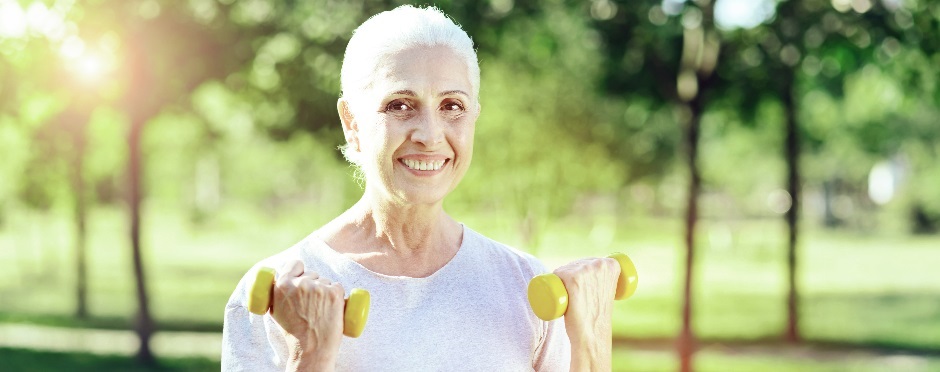
5 Tips for the Aging Athlete – Exercise Guidelines for the Elderly
2 CommentsLike it or not, we are all getting older. For many, the changes associated with aging can affect their workouts. Some of the changes with aging include a decline in muscle strength, decreased muscle flexibility and less energy. In addition, aging leads to decreased sensation, decreased balance, and decreased bone strength. However, these changes do not have to affect your active lifestyle. In fact, staying active has documented health benefits for both your physical, mental, and emotional health.
Here are some tips that can help boost your energy level and keep you moving:
1. Stretch
Loss of muscle flexibility is a normal part of aging. Daily stretching can help counteract this. Certain activities can lead to muscle imbalances and tightness in various muscle groups. Athletes should try to identify which muscles are tight and spend time focusing on stretching those areas. Static stretching after workouts can be beneficial for improving muscle length.
2. Add More Recovery Days
Aging athletes should accept that they will be unable to train and perform as they did in their 20s. Older adults need to allow themselves more time to recover between their workouts. Ensuring proper recovery time between workouts will help to prevent injury and keep you performing for many years to come. Whether it is a true rest day or an active rest day, make sure to listen to your body and allow it the recovery it needs.
3. Practice Safe Strength Training
Many people have the misconception that older adults should not perform strengthening exercises such as lifting. This is false as long as the person is performing the exercises safely. As we age, we want to maintain or build muscle strength. Muscle strength in the older adult can help improve balance and function. The stress of lifting weights or performing body weight resisted exercise, such as squats or lunges, helps to promote bone and muscle health. There is no age limit to the body’s ability to gain muscle.
4. Change your Mindset
Many athletes pride themselves and their worth on what they can do. As they age, they will inevitably be unable to reach these expectations if they are always trying to beat their previous record. Instead, try shifting your mindset to be driven by internal fulfillment and health. Your workouts should be focused on personal growth and should also be fun. Your potential may decline as you age, but you can still feel that you have pushed yourself within that potential.
5. Avoid Inactivity
One of the biggest threats to any athlete is inactivity. There are many detriments to the body from disuse, including muscle atrophy and cardiac changes. Regular exercise may help slow the physiologic changes associated with aging. So no matter your age or previous activity level, keep moving!
Be an Athlete at Any Age
Aging is inevitable but it does not have to prevent you from doing your workouts. If you feel soreness after your workout, contact Athletico to request an appointment. Our team will take a look at your condition and provide next steps for the treatment process. Athletico clinicians are even able to connect with your virtually now with our telehealth treatment options.
The Athletico blog is an educational resource written by Athletico employees. Athletico bloggers are licensed professionals who abide by the code of ethics outlined by their respective professional associations. The content published in blog posts represents the opinion of the individual author based on their expertise and experience. The content provided in this blog is for informational purposes only, does not constitute medical advice and should not be relied on for making personal health decisions.
References:
1. Hurley, Ben F., and Stephen M. Roth. “Strength training in the elderly.” Sports Medicine 30.4 (2000): 249-268.
2. Evans WJ. Exercise training guidelines for the elderly. Med Sci Sports Exerc. 1999;31(1):12-7.

2 Comments
Diann Wichman
Do you have suggestions for stretching before starting to garden?
Athletico
Thanks for reaching out Diann! You can find some hand stretches for gardeners in this blog: http://bit.ly/2VESYBv If you have more questions, please schedule an appointment at a nearby Athletico clinic to talk with one of our experts (http://www.athletico.com/search-locations/).